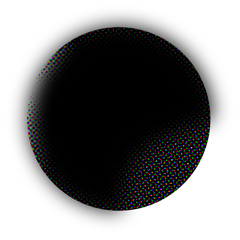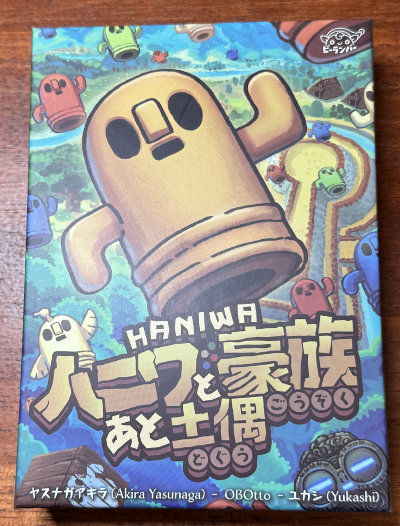
Last time we took a look at Merchants of Haniwa, where players are modern day curators assembling collections of artifacts. This time, we’ll look at “Haniwa and Gozoku. Also Dogu!” which shares the Haniwa theme, but approaches it differently. The players are Haniwa artisans that attempt to please Gozoku (powerful families, patrons in a sense). Dogu is a fun addition, and are clay figures from the Jomon period, which preceded the Kofun period Haniwa were made in. Reading “also dogu” always reminds me of “and Zoidberg” phrasing from Futurama.
I also got a cute set of score sheets as a bonus item from the vendor’s booth at Game Market.
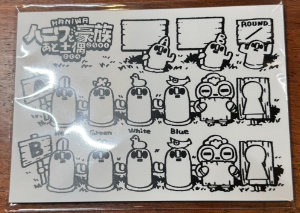
Components
The back of the box lists the contents as 52 Haniwa Tiles, 4 Happiness Dice, 1 guide book, and 2 summary cards, but it actually includes guide books and summary cards for both first and second edition. The guide book and summary cards are in both Japanese and English, and the components are language agnostic. Digital editions are also available for download from QR codes on the reference sheets, which is a nice touch.
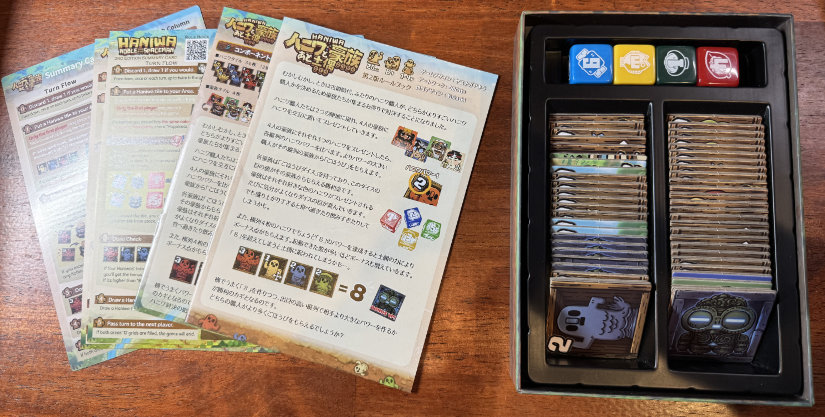
Character tiles have two sides: regular and happy side.
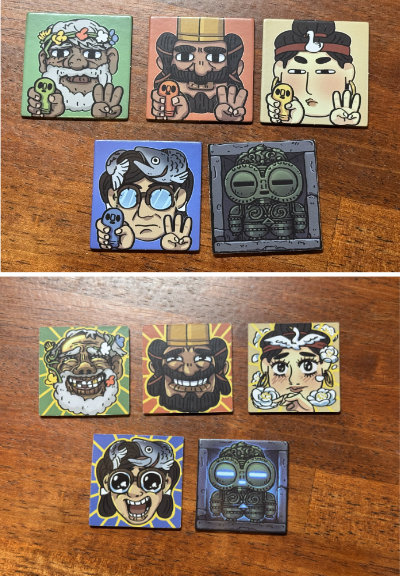
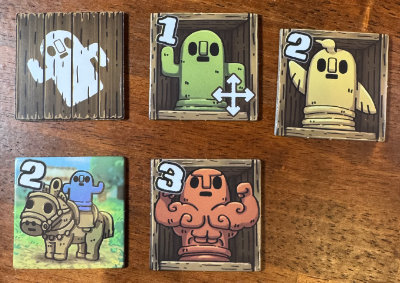
Rules

It supports two to four players age six and up, with an estimated game time is twenty minutes.
The goal of the game is to please the Nobles, with their happiness giving points to the player who gained their favor. The Gozoku tiles are placed in a column between the two player areas and Dogu tiles at the top of each row. Happiness dice are placed on each Noble.
Turn Flow
- Discard and draw a new Haniwa tile (up to once per turn, twice per game)
- Place a Haniwa tile in your area.
- If the Haniwa tile you placed is the same color as the column’s Noble, increase the Noble’s happiness die by the Haniwa tile’s power.
- If the happiness die exceeds six, it wraps around starting at one, and you get a Kofun tile. eg if the Happiness die is 5 and a power 3 Haniwa tile is played, the Happiness die becomes 2.
- Dogu check – in addition influencing the nobles, your Haniwa tiles also affect the Dogu at the top of each column. If the power of the four Haniwa tiles in the row add to eight, that Dogu activates and gives bonus points at the end of the game. However, if the total is greater than eight, you’ll be cursed and the reward for a noble will be nullified.
- Draw a Haniwa tile
- Pass turn to the next player
- The game is over when both grids are filled
Victory
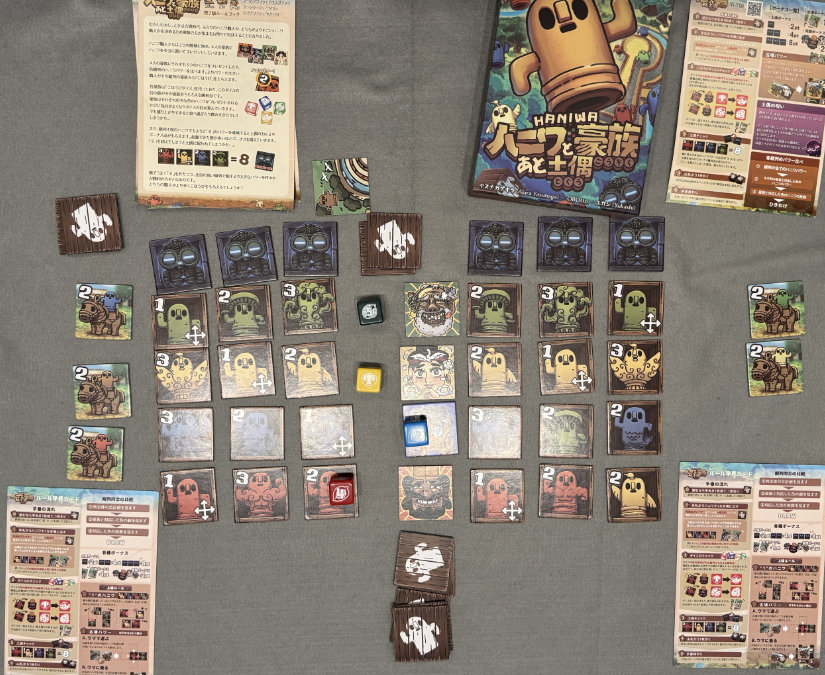
The game is over when both player grids are filled with twelve tiles each. Players then determine who won over each Noble by comparing the sum of their Haniwa tile powers in the column. The player with the most points wins over the Noble and gets a number of points equal to the Happiness die. If the Noble is happy, they get a bonus two points. Unused Kofun tiles are one point each. Dogu tiles based on the number of tiles you have (one tile is two points; two tiles is four points; three tiles is 8 points).
Thoughts
While I’ve only played it once, I enjoyed it. The multiple dimensions to consider when playing tiles adds to the strategy, as does sharing the happiness counter for each noble with your opponent. A lot of thought has gone into the components.
Acquiring

Available from the publisher’s Booth store with shipping in Japan and International via Buyee.
Publisher’s X (formerly Twitter)
Game Design: Akira Yasunaga
Artwork: OBOtto
Logo Design: Yukashi
